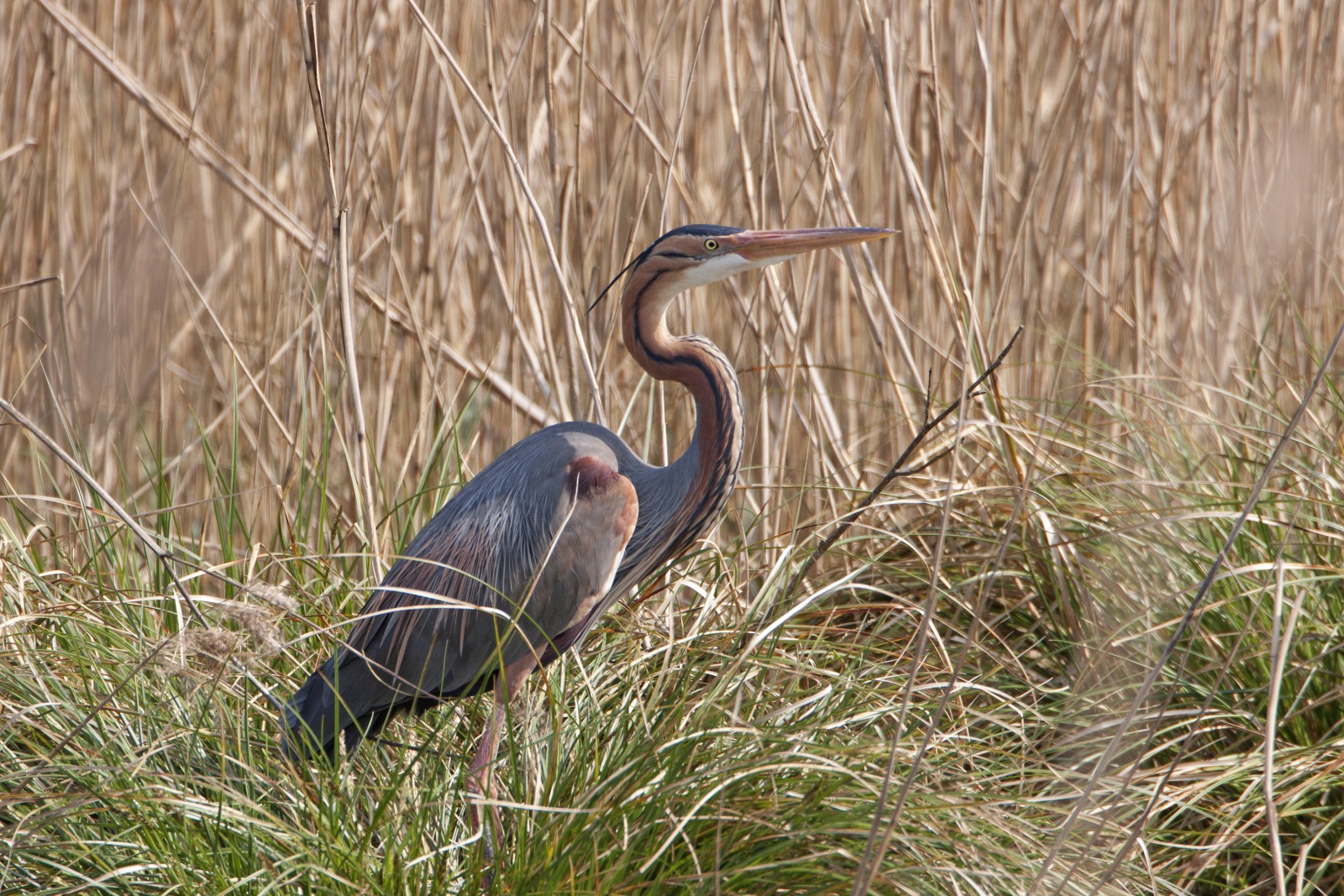Description
Reposoir du Platin is a resting place that welcomes many shorebirds throughout the year at high tide. In winter, at high tide, there are species such as Red Knot, Sanderling, Dunlin, Grey Plover, Common Ringed Plover, Ruddy Turnstone, Eurasian Curlew, Bar-tailed Godwit and Black-tailed Godwit which can be seen in large groups sometimes numbering several hundred individuals. On the gull side, you can observe Black-headed Gull ,Mediterranean Gull, Common Gull, European Herring Gull, Yellow-legged Gull or Lesser Black-backed Gull. Little Tern and Sandwich Tern often join the party, but rarely number more than twenty.
At low tide, the same waders can be observed on the mudflat, sometimes accompanied by waterfowl such as the Mallard, Eurasian Wigeon orNorthern Shoveler. The marshes backing onto the path make it possible to observe other more diverse species, such as Little Egret, Grey Heron, Mute Swan, Little Grebe or even the . In terms of waders, the site is also interesting with in particular the Curlew Sandpiper, Common Sandpiper, Green Sandpiper, Common Greenshank, Common Redshank, Black-winged Stilt, and many more. There is also a nice variety of passerines, such as Grey Wagtail, Western Yellow Wagtail, Reed Warbler, Zitting Cisticola, European Stonechat, Whinchat and Northern Wheatear.
_________________________
Français: Un banc de sable et de galets, qui sert de reposoir à de nombreux petits limicoles, qui peuvent parfois se retrouver par centaines en hiver. Le reposoir du Platin acceuille au cour de l'année de nombreux limicoles à marée haute. En hiver, à marée haute, on retrouve des espèces, comme le Red Knot , le Sanderling , le Dunlin , le Grey Plover , le Common Ringed Plover , le Ruddy Turnstone , le Eurasian Curlew , la Bar-tailed Godwit et la Black-tailed Godwit qui peuvent être observés en grands groupes comptant prfois plusieurs centaines d'individus. Du côté des laridés, on peut observer la Black-headed Gull , la Mediterranean Gull , le Common Gull , le European Herring Gull , le Yellow-legged Gull ou encore le Lesser Black-backed Gull . Des Little Tern et des Sandwich Tern se joignent souvent au groupe, mais sont rarement plus d'une vingtaine...
A marée basse, les mêmes limicoles peuvent être observés sur la vasièren parfois accompagnés d'anatidés comme le Mallard , le Eurasian Wigeon ou encore le Northern Shoveler. Les marais adossés au chemin permettent d'observer d'autres espèces plus diverses, comme l' Little Egret , le Grey Heron , le Mute Swan, le Little Grebe ou encore le Great Cormorant . Au niveau des limicoles, le site est assi intéressant avec notamment le Curlew Sandpiper , le Common Sandpiper , le Green Sandpiper , le Common Greenshank , le Common Redshank , l' Black-winged Stilt , et bien d'autres... Il y a aussi une belle variété de passereaux, comme la Grey Wagtail , la Western Yellow Wagtail , la Reed Warbler , la Zitting Cisticola , le European Stonechat , le Whinchat et le Northern Wheatear.
Details
Access
It is possible to park upstream from the resting place, after the "Les Sables" campsite, at the level of the surf school. You must then continue on foot or by bike for about 500m. A beautiful walk is possible along the coast to the tip of Chay.
_________________________
Français: Il est possible de se garer en amont du reposoir, après le camping "Les Sables", au niveau de l'école de surf.. Il faut ensuite continuer à pied ou à vélo sur 500m environ. Une belle ballade est envisageable en longeant le littoral jusqu'à la pointe du Chay.

